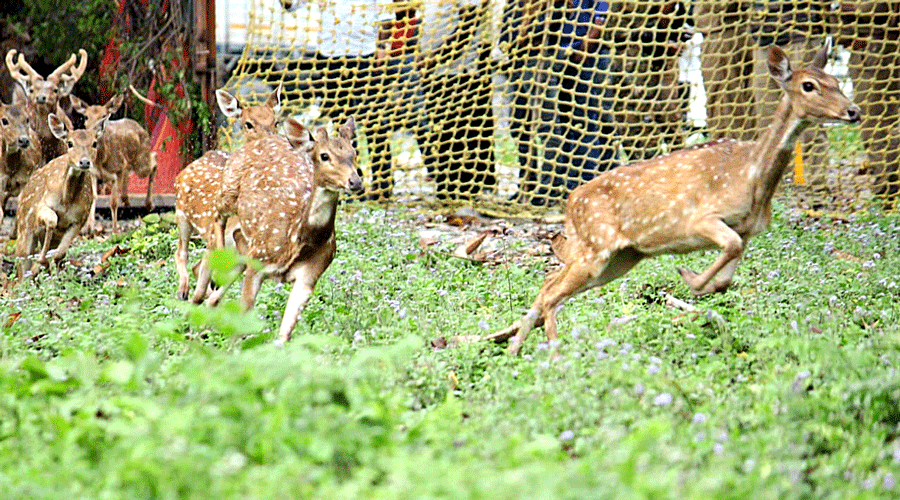The state forest department has drawn up a plan to intensify its digital surveillance across the forests of north Bengal at a meeting held in Calcutta earlier this month.
Hundreds of trap cameras would be installed and drones would be engaged to monitor the wildlife and the reserve forest areas for this purpose, said senior officials of the department.
As a part of the plan, Rajendra Jakhar, the chief conservator of forest (wildlife, North) sent a proposal last week, seeking approval to install 1,500 trap cameras in the forests of this region.
“These cameras will be operational round the clock and will be placed in different forests of north Bengal including the national parks and wildlife sanctuaries. The cameras would help us to keep a close tab on the movement of wild animals in forests. Also, during enumeration exercises like census and estimation of any wild species, the cameras will be of immense use,” said Jakhar.
Jaldapara National Park, the largest rhino habitat in the state, is located in this region. Also, north Bengal has national parks like Neora Valley, the Buxa Tiger Reserve, and the Mahananda Wildlife Sanctuary where the presence of Royal Bengal tigers and a number of other rare species have been witnessed in recent years.
“The department has plans to increase the manpower. But digital surveillance is equally important these days for conservation and protection of forests and wildlife,” said a senior forester.
Along with the cameras, the department has also planned to get sophisticated drones.
“These will be used for surveillance and to track the movement of animals like elephant herds. The risk of man-elephant conflict can be mitigated by using drones,” the forester added.
Over the years, there has been a steady rise in the number of incidents of animals straying into human habitats.
“In many cases, we have to dart animals to take them away into the forest. For this purpose, it has been planned to procure sophisticated tranquillising guns,” a source said.










